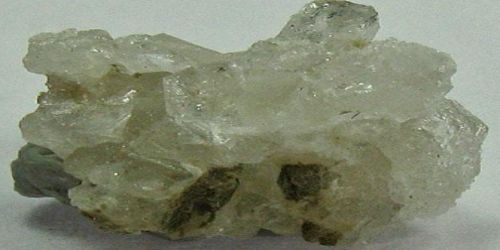Bentonite is an absorbent aluminum phyllosilicate clay consisting mostly of montmorillonite. It was named by Wilbur C. Knight in 1898 after the Cretaceous Benton Shale near Rock River, Wyoming. It is defined as a naturally occurring material that is composed predominantly of the clay mineral smectite. Most bentonites are formed by the alteration of volcanic ash in marine environments and occur as layers sandwiched between other types of rocks. The smectite in most bentonites is the mineral montmorillonite, which is a dioctahedral smectite but occasionally other types of smectite may be present.
Property
This bentonite property is mainly exploited to produce green molding sand. In this application, bentonite with a suitable moisture content covers quartz sand grains and acts as a connective tissue to the entire mass. Under this homogenous coating, even at maximum compression, water will remain in a highly “rigid” state, binding the sand grains and lending maximum resistance to the sand mold.

The different types of bentonite are each named after the respective dominant element, such as potassium (K), sodium (Na), calcium (Ca), and aluminum (Al). Experts debate a number of nomenclatorial problems with the classification of bentonite clays. Bentonite usually forms from weathering of volcanic ash, most often in the presence of water. However, the term bentonite, as well as a similar clay called tonstein, has been used to describe clay beds of uncertain origin. For industrial purposes, two main classes of bentonite exist sodium and calcium bentonite. In stratigraphy and tephrochronology, completely devitrified (weathered volcanic glass) ash-fall beds are commonly referred to as K-bentonites when the dominant clay species is illite.
Occurrence
In 2011, the U.S. was the top producer of bentonite, with almost one-third world share, followed by China and Greece. Most high-grade natural sodium bentonite is produced from the western United States in an area between the Black Hills of South Dakota and the Bighorn Basin of Wyoming and the Tokat Resadiye region of Turkey. Mixed sodium/calcium bentonite is mined in Greece, Australia, India, Russia, and Ukraine.
Other major locations producing include New Zealand, Germany, Greece, Turkey, India, and China.
Information Source:
















